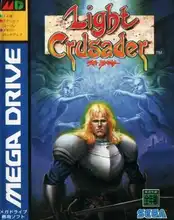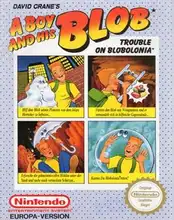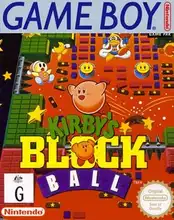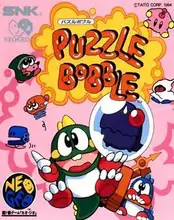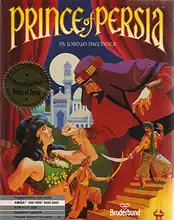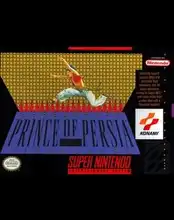That feeling of being utterly stuck. Staring at the screen, controller in hand (or fingers poised over the keyboard), knowing there's a way forward, but the path isn't obvious. It's a core part of the retro gaming experience, isn't it? And often, that roadblock comes down to the clever inclusion of puzzle elements.
While dedicated puzzle games like [Tetris](https://weplayretro.games/online/tetris/) or Lemmings were titans of the era, the truth is, brain-teasing challenges were woven into the very fabric of countless other classic genres. Developers back then weren't afraid to make you pause, think, and experiment.
Let's take a nostalgic dive into those fundamental puzzle elements that defined so many of our favorite pixelated adventures and why they still hold a special place in our gaming hearts.
More Than Just Matching Tiles: What Defines a Puzzle Element?
At its core, a puzzle element in a game is any challenge that requires logic, pattern recognition, spatial reasoning, deduction, or creative problem-solving rather than just reflexes or brute force. It's about figuring out the solution, not just executing it perfectly.
Think about traditional puzzles – the satisfying click of a jigsaw piece, the frustrating-yet-rewarding twists of a Rubik's Cube, or the careful sliding in a 15 puzzle. These are all about structure, rules, and finding the right sequence or arrangement. Retro game developers translated these ideas into interactive challenges.
These elements weren't always the main focus, but they served crucial roles:
- Blocking Progress: Requiring a puzzle solution to open a door, get an item, or access a new area.
- Adding Depth: Making gameplay more than just running and jumping or fighting.
- Rewarding Observation: Encouraging players to pay attention to details in the environment or dialogue.
- Testing Comprehension: Ensuring players understood the game's mechanics or world rules.
Classic Puzzle Elements We Loved (and Sometimes Hated)
Retro games featured a fantastic variety of puzzle types, often borrowing ideas from traditional puzzles and inventing new ones unique to the digital realm.
- Environmental and Spatial Puzzles: Moving objects (like crates or blocks in games influenced by
Sokoban), navigating tricky layouts, using the environment itself to progress. Remember pushing blocks in[Lode Runner](https://weplayretro.games/online/lode-runner/)or figuring out the falling rocks inBoulder Dash? These required spatial awareness and planning. - Inventory and Combination Puzzles: A staple of point-and-click adventure games (
King's Quest,Space Quest,[Maniac Mansion](https://weplayretro.games/online/maniac-mansion/)). Finding items and figuring out which ones combine or interact with objects in the environment was pure logic and sometimes, pure trial-and-error madness! - Logic and Deduction: Riddles, codes, following clues from dialogue or text, figuring out sequences. Early RPGs and adventure games often threw these at you, forcing you to think like a detective.
- Pattern Recognition: Identifying repeating sequences, understanding enemy movements, or solving tile-matching challenges (
Chain Shot!,Tetris, earlyMahjongadaptations). - Switch and Mechanism Puzzles: Pulling levers in the right order, activating pressure plates, redirecting lasers – common in platformers and action-adventure games to open paths or disable traps.
These weren't just abstract problems; they were integrated into the game world, making you feel like you were truly interacting with a place and its challenges.
Puzzle Elements Beyond the "Puzzle Game" Genre
This is where the magic really happens for retro enthusiasts. Puzzle elements weren't confined to games explicitly labeled "Puzzle." They were everywhere!
- Adventure Games: The genre practically is a series of interconnected puzzles. Inventory, dialogue trees, environmental interactions – all demand logical thinking. Games like those from Sierra and LucasArts are prime examples. Find them on platforms like GOG.com.
- Platformers: Beyond jumping, many platformers included block pushing (
Lode Runner), key hunting, switch activation, or using specific items to overcome obstacles. - RPGs: Dungeons often featured navigation puzzles, pressure plates, teleporters, or simple riddles to unlock doors. Early
UltimaorWizardrygames often had these elements. Check out classics on sites like Archive.org. - Action-Adventure: Games like
[Prince of Persia](https://weplayretro.games/online/prince-of-persia/)(the original!) blended platforming with timing-based environmental puzzles.
Even early simulation or strategy games sometimes included puzzle-like scenarios that required optimizing resources or figuring out complex systems.
Why Do These Simple Elements Endure?
The appeal of these classic puzzle elements lies in their ability to engage our minds in a different way. They offer:
- Satisfaction: The "aha!" moment when you finally figure out a tricky solution is incredibly rewarding.
- Challenge: They push you to think creatively and apply different types of logic.
- Pacing: They provide breaks from action or exploration, allowing for moments of thoughtful engagement.
- Accessibility: Many core puzzle mechanics are easy to understand, even if the solutions are complex.
Reliving these moments is easy today. Emulators like DOSBox allow you to play countless classic PC games that are packed with these nostalgic challenges.
Frequently Asked Questions
Q: What's the difference between a puzzle game and a game with puzzle elements?
A: A dedicated puzzle game's entire focus is on solving puzzles (e.g., Tetris, Sokoban). A game with puzzle elements is primarily another genre (like adventure or platformer) that incorporates puzzle challenges as part of the overall gameplay loop.
Q: Are retro game puzzles harder than modern ones? A: Not necessarily harder, but often different. Retro puzzles sometimes relied on less hand-holding, obscure clues, or pixel-perfect interaction, leading to perceived difficulty. Modern puzzles might be more integrated or physics-based.
Q: Where can I play classic games with great puzzle elements? A: Look for classic adventure games, early platformers, and RPGs on platforms like GOG.com, or explore the vast archives of playable-in-browser games on Archive.org. DOSBox is essential for playing many classic PC titles locally.
The Timeless Appeal
Those simple, sometimes frustrating, often brilliant puzzle elements were more than just roadblocks in retro games. They were integral parts of the experience, teaching us patience, rewarding our curiosity, and proving that sometimes, the most powerful weapon isn't a sword or a blaster, but a bit of clever thinking. They are a key reason why we keep coming back to these old classics.


